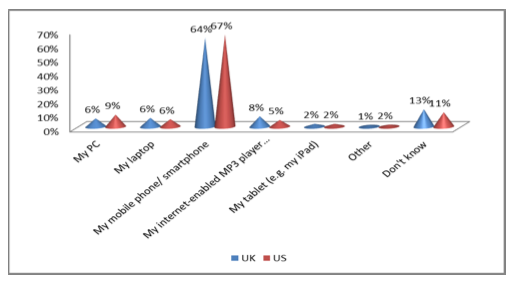Mobile apps are going through an
expansion so rapid that many are comparing the growth of this nascent industry
to the early days of the dot-com bubble.
Some have taken this analogy so far that they have proclaimed that “for
mobile apps, it’s 1996 all over again.”[1]
One key difference, though, is that today’s consumers bare battle scars
from nearly two decades of exposure to obnoxious pop-up ads and blinking
banners. So although it may seem
like 1996 for mobile apps, the 1996-era naïveté of the consumer has long since
vanished, leaving bitter, ad-adverse veterans of the web.
Much of the Internet is powered by advertisement-derived revenue, and many take for granted the fact that ads, at least in their current incarnation, will continue to generate the kinds of profits that they historically have. A recent survey of American and British Internet users calls this assumption into question, highlighting the dwindling efficacy of Internet-based ads, particularly those served on mobile platforms. While it is not particularly astonishing that ads in general have seen a downturn in terms of click through rate, the much more surprising result is the utterly vehement response of those surveyed to the ads served through their phones.
A phone is more intimate than a computer (after all you carry it everywhere, keep it in your pocket, and press it to your face) and it could be that this special relationship that people have with their phones makes ads seen on them all the more appalling. The following graph shows what percentage of survey respondents found ads served through different platforms to be invasive and unwanted.
Shockingly, ads seen on phones are over ten times more offending than
those seen while browsing on a traditional computer.[2] Essentially, people see their phones as a private, personal
space and the ads served through them are just revamped, 21st
century versions of the universally hated telemarketer.
Maybe, then, it really is more like 1996 for mobile apps than we thought. The dot-com bubble was fueled by the idea that a website’s getting “eyeballs” would directly equate to revenue, and when this turned out to not be true, many Internet businesses failed. Today we see over 500,000 apps in the Apple App Store, many of which are free and are operating under the assumption that if enough people get that app, traditional Internet advertising methods can be used to cash in on the resulting user base.[3] The public, however, seems to find phone ads highly unappealing, so unless a better way to monetize these apps is found, it may become 2000 for mobile apps sooner than we think.
Sources:
1. http://techcrunch.com/2011/02/19/mobile-apps-1996-all-over-again/
2. http://techcrunch.com/2012/02/24/first-look-survey-warns-of-consumers-turning-off-from-digital-ads/
3. http://www.gottabemobile.com/2012/02/24/apple-making-it-easier-to-find-awesome-apps-with-chomp/

No comments:
Post a Comment